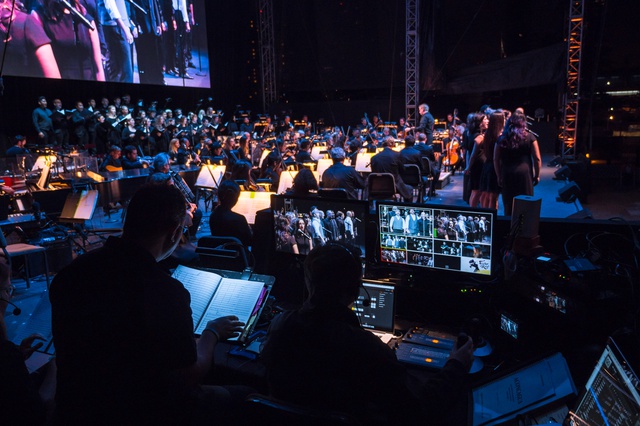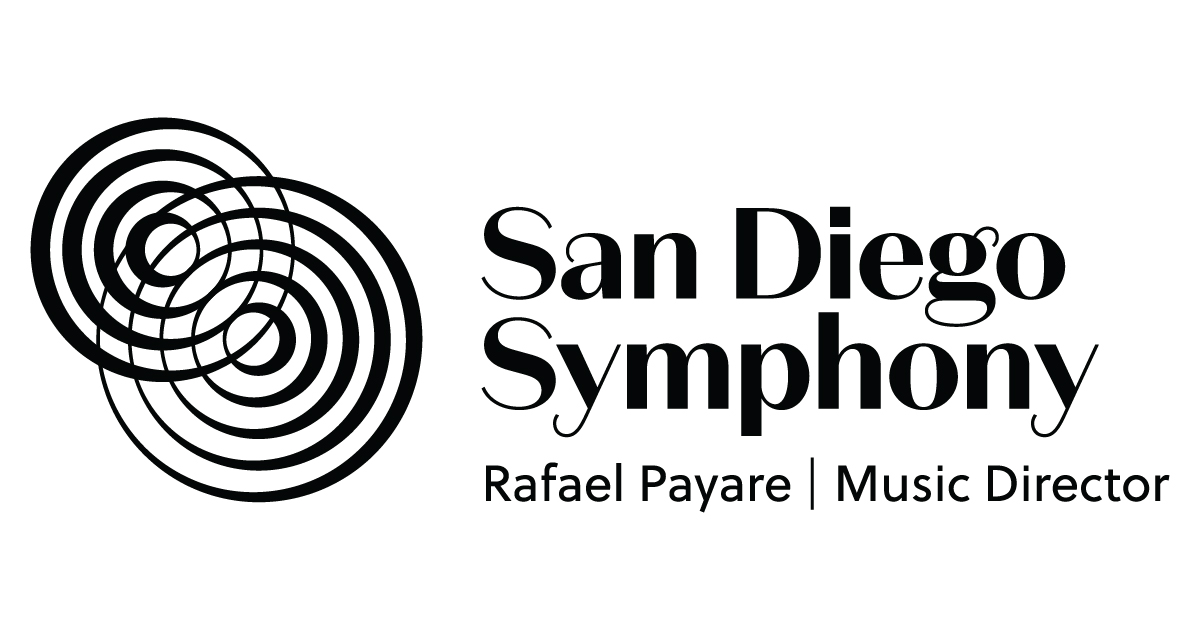Behind the Curtain: Concert video production with William Zauscher

In honor of Labor Day, we're taking a closer look at the work that goes into making the magic happen at Bayside Summer Nights. If you've attended a concert at the Embarcadero this summer, you have seen the video screens on the stage that allow you to get up close and personal with the musicians. This deft camerawork is managed by William Zauscher and we sat down with him to learn more about how he oversees the Symphony's concert video production.
SDSO: Can you describe what you do for the concerts?
WZ: From the moment the audience arrives, I'm in charge of what is on the video screens. Once a concert starts, I switch between the different cameras to enhance the experience of our guests. The idea is to bring out the most important thing happening on stage at any given moment. When a guest artist or conductor addresses the crowd, they go on screen. During the music, I carefully select which musician should be highlighted on a second-by-second, beat-by-beat basis. Thus, everyone in the concert venue has equal access to enjoy the concert as if they were up-close and personal with the musicians making the music.
In addition to managing the live camera switching and direction, I supply nearly all of the video equipment the San Diego Symphony needs. This includes all of the cameras, cables, monitors, video accessories and peripherals, and other electronic technology. The only video equipment I don't furnish are projectors and screens. This means I need to ensure everything is connected properly and functioning just right, and if not, fix or replace it. I get to figure out where and how to safely mount or place each of my 13 cameras, such that sightlines aren't obstructed and stability is maximized. I send various video feeds to different monitors around the venue so that people can watch from backstage or enjoy the show from outside the main seating area at Bayside.
During a performance I need to get all the camera colors and brightness settings to match as closely as possible. As you can imagine, this is no easy task during an outdoor show when the sun is setting. As I switch between the camera shots, I ensure every single shot is in focus and framed perfectly. I talk to the camera operators to give them direction and let them know when they're about to go live. I operate robotic cameras, after programming them with pre-determined positioning presets. I receive cues from my score reader, RB Anthony, who closely follows the musical score and reads several bars ahead for my next cue or two. From first cue to curtain call, it's a wonderful yet wild ride.
SDSO: Do you have a different approach for different kinds of concerts?
WZ: The San Diego Symphony has many different kinds of concerts that involve video. I also support live movie concerts, where the musicians aren't on screen but there still are technical challenges having to do with video. Another common live-video service is piano-cam, where we show the keys of the piano on a screen so that everyone can see the performer's hands as a concerto is performed. I also do live video work for various music series or guest performers that don't involve the orchestra, from jazz to chamber music or pop stars and other types of entertainment.
Each concert requires a different approach not only in what goes on screen but in the preparations for each performance. Even concerts that would appear to be similar all have considerable differences in terms of orchestration, artistic demands, and technical requirements. The one thing in common is that live video requires a hefty amount of pre-production, whether it's studying a score, getting familiar with the music or artist, or just getting all the right technical pieces together to be able to anticipate the on-stage action.
SDSO: What is the most challenging and rewarding part of your job?
WZ: The time demands are challenging, especially now that my wife and I have an adorable baby boy. In addition to showing up for most orchestra rehearsals, I spend a lot of time studying scores. Then having to set up all the cameras, troubleshoot technical issues, and prep for showtime takes quite a while, and it all needs to be ready before doors open.
Despite these challenges, I am grateful to work with some of the finest musicians in the world, and I get to be somewhat on the same stage with them and perform with them in my own unique way. The thrill of performing live and the pressure that comes with it is something I was born for. As a musician, it's extremely rewarding to be involved with such a world-class orchestra and be such an integral part of each show.
SDSO: What is a typical day like for you?
WZ: I'm not sure if there is a "typical day" in my line of work. If there is a rehearsal and a performance on the same day, I attend the rehearsal and take notes, write video cues into the score, and then plan and execute all the technical aspects before the show. I coordinate and communicate with the production, artistic, facilities, and marketing departments to make sure we are all on the same page and I have what I need from everyone.
In addition to my work with the Symphony, I do a lot of video-related projects such as editing and web streaming for other clients. I travel quite a bit to do concerts and films with orchestras around the world. Any given day I'm planning up to five shows in advance, and I'm typically involved with around 250 performances or events every year.
William Zauscher manages the Symphony's video production at its Bayside Summer Nights concerts. This interview was conducted by marketing assistant Kelly Hillock.
Share ArticleBack to all posts
